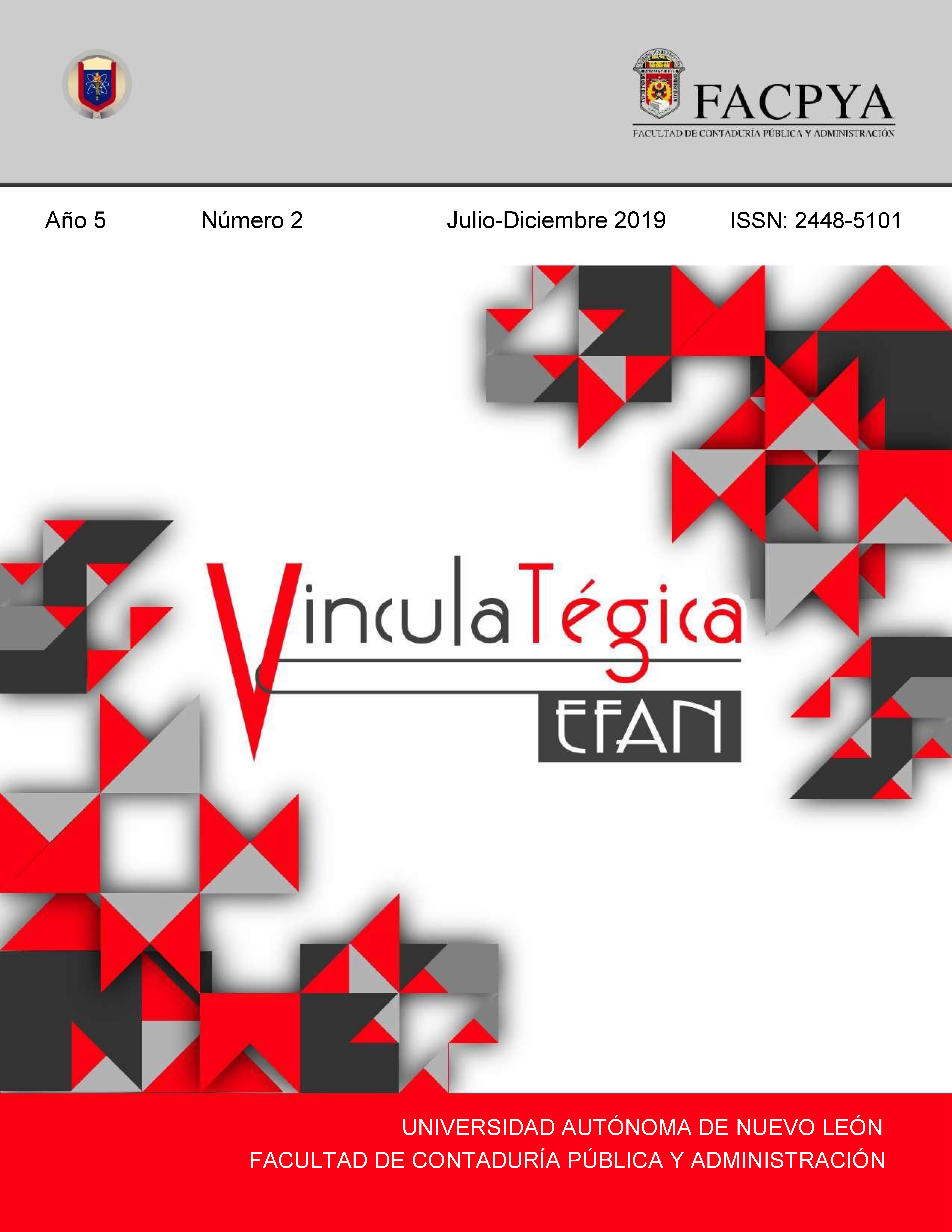La selección de proveedores en organizaciones públicas de México ante los desafíos de la era digital
DOI:
https://doi.org/10.29105/vtga5.2-715Keywords:
Toma de Decisión, Gasto Publico, Selección de proveedoresAbstract
The government agencies in Mexico must respond to administering the budget based on international economic guidelines, globalization, economic rationalization, optimization of resources, transparency, requiring reaching levels of efficiency, effectiveness and effectiveness in the exercise of public expenditure for the provision and administration of the services that correspond to the company. The supply of goods and services represents one of the key processes for productivity and competitiveness, which highlights the importance of having tools for evaluation and selection of suppliers that avoid in public organisms the implementation of processes that lead to corruption, lack of transparency and mismanagement of public investment. This article presents a proposal for a public management model for the selection of suppliers through multicriteria decisionmaking analysis tools, which allows the evaluation of qualitative and quantitative variables in environments of uncertainty. The model was applied in the Higher Secondary Education Sector in the State of Sonora. The results obtained show that this model is practical and feasible to be implemented as an integral tool for the evaluation and selection of bidding proposals to provide public goods and services.
Downloads
References
Casañ, & Ponz. (24 de 03 de 2013). UPV. Recuperado el 28 de 08 de 2014, de http://www.google.com.mx/url?sa=t&rct=j&q=teoria%20de%20la%20decision%20multicriterio %3B%20aplicacion%20en%20la%20selecci%C3%B3n%20de%20&source=web&cd=1&ved=0 CBsQFjAA&url=http%3A%2F%2Friunet.upv.es%2Fbitstream%2Fhandle%2F10251%2F29371 %2FLa%2520Decisi%25C3.
Contreras, & Pacheco. (30 de 10 de 2008). NU ILPES CEPAL. Obtenido de http://repositorio.cepal.org/handle/11362/35914.
CEPAL. (20 de Noviembre de 2008). www.cepal.org. Obtenido de http://www.cepal.org/ilpes/publicaciones/xml/6/34576/manual58.pdf.
García. (04 de 03 de 2009). Universidad Politécnica de Cartagena. Recuperado el 01 de 07 de 2014, de Universidad Politécnica de Cartagena: http://repositorio.bib.upct.es/dspace/bitstream/10317/1022/msgc.pdf.
IMCO. (01 de Octubre de 2012). www.imco.gob.mx. Obtenido de http://imco.org.mx/wpcontent/uploads/2013/7/Guia_de_compras_publicas_011012.pdf.
Ley, R. (2009). Análisis de decisiones integral. Orizaba, Veracruz, México: Consultoria en decisiones.
OCDE. (03 de 11 de 2018). www.ocde.org. Obtenido de http://www.oecd.org/mexico/49363879.pdf
Omkarprasad S., V., & Sushil, K. (2004). Analytic hierarchy process: An overview of applications. European Journal of Operational Research, 1-29.
Rheault, J. P. (1987). Introducción a la Teoría de las Decisiones con aplicaciones a la administración. México: LIMUSA.
Rodríguez, R. J., & Cortés, F. A. (2012). Selección de una Plataforma de Inteligencia de Negocios: Un Análisis multicriterio Innovador. Red de Revistas Científicas de América Latina, el Caribe, España y Portugal, 237-253.
Rositas, J., & Mendoza, J. (2012). Métodos Innovadores para la Investigación y la Toma de decisiones en las organizaciones. México: Elsa G. de Lazcano, S.A. de C.V.
Salinas, F., & Jalil, M. (2014). Herramientas teórico conceptuales para el análisis de la toma de decisiones en comités de conomía pública. Democracia, 165-190. DOI: https://doi.org/10.15446/anpol.v27n80.45619
Saaty, T. L. (1990). How to make a decision: The Analytic Hierarchy Process. European Journal of Operational Research, 9-26 DOI: https://doi.org/10.1016/0377-2217(90)90057-I
SFP. (20 de Octubre de 2008). www.funcionpublica.gob.mx. Obtenido de Secretaría de la función pública: http://www.funcionpublica.gob.mx/unaopspf/doctos/adquisiciones/guia_pbl5.pdf.
Downloads
Published
How to Cite
Issue
Section
License

This work is licensed under a Creative Commons Attribution 4.0 International License.
a). Authors keep copyright and give the journal the right of the first publication of the work under a Creative Commons attribution license. This license allows others to share the work as long as original authorship and initial publication in this journal is acknowledged.
b). Authors may make other independent and additional contractual agreements for the non-exclusive distribution of the version of the article published in this journal (e.g., include it in an institutional repository or publish it in a book) as long as they clearly indicate that the work was published for the first time in this journal.







